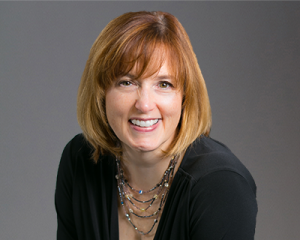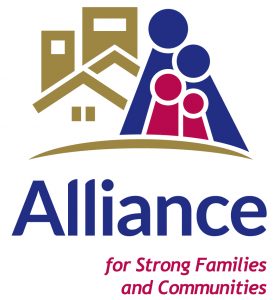The Alliance Shares its Reframing Expertise
May 17, 2018 Continuing our series featuring leaders in the human service field, we spoke with Marlo Nash, Senior Vice President of Public Policy and Mobilization, Alliance for Strong Families and Communities (Alliance), who is spearheading its Building Well-Being Narrative. The Alliance’s leadership and commitment to reframing human services over the past two years has included working with the National Assembly to offer several learning opportunities, such as workshops and presentations, to engage its national office and nationwide network in reframing. As a result, they have helped to build a movement of leaders across the country. Additionally, it has made reframing its communications a priority.
Continuing our series featuring leaders in the human service field, we spoke with Marlo Nash, Senior Vice President of Public Policy and Mobilization, Alliance for Strong Families and Communities (Alliance), who is spearheading its Building Well-Being Narrative. The Alliance’s leadership and commitment to reframing human services over the past two years has included working with the National Assembly to offer several learning opportunities, such as workshops and presentations, to engage its national office and nationwide network in reframing. As a result, they have helped to build a movement of leaders across the country. Additionally, it has made reframing its communications a priority.
Earlier this year, the Alliance and the American Public Human Services Association (APHSA) published “A National Imperative: Joining Forces to Strengthen Human Services in America,” relying on the Building Well-Being Narrative to articulate the structural challenges limiting the sector’s ability to address society’s most important priorities and taking a pragmatic approach to explaining solutions.
In 2017, the Alliance released its excellently framed public policy platform, “A Blueprint for Strong Families and Communities,” and “Federal Public Policy Agenda,” integrating the Building Well-Being Narrative throughout both pieces.
An August 2017 opinion piece by Susan Dreyfus, the Alliance’s President & CEO and a National Assembly board member, published in The Hill was a thoughtfully-framed commentary using the Building Well-Being Narrative to establish why federal health and human services policy decisions matter to the public and to explain how various policies and programs work together to influence well-being.
Nash generously spent time with us to describe the Alliance’s reframing experience.
The Alliance Provides Insights
Q: What prompted the Alliance to join the Reframing Human Services Initiative?
Nash: The Alliance is a firm believer in framing science and accelerating brain science in policy and practice, so it’s a natural fit. We think there is value in thinking about how to communicate our messages and agenda to make progress, given that people receive information through their belief systems. Human service organizations sometimes struggle to describe the full range of issues and programming they provide and how it all relates—reframing language advances the field and gives it a way to talk about intersectionality of issues.
Q: What was the biggest challenge in securing Board and/or stakeholder buy-in and how did you overcome it?
Nash: The Alliance didn’t face challenges since the network comes from science and research perspectives to inform all aspects of its work. Framing, backed by extensive FrameWorks Institute research, gave us confidence from the beginning. We recognized it as a valuable tool and members were interested and eager in uptake.
Q: How did the Alliance successfully achieve sustainable implementation?
Nash: We applied framing to the Alliance’s public policy platform, developed in partnership with members through a field engagement process, that is the centerpiece of our work. All communications with policymakers are derived from that core, framed document. During that process, our network identified critical issues to talk about from a strengths-based approach, so we applied the new frame to create, in plain language, the essential building blocks of well-being that all people need and want for their families and communities. It has become part of who we are.
Q: How has reframing positively impacted the Alliance’s communications and policy efforts?
Nash: Because the network provides many different human services, in just 60 seconds ”building blocks” can easily describe the full array of programs that build, restore, and maintain well-being by providing access to its key components. Particularly in a time when there is so much political division, framing brings things together and talks about common values and outcomes. We have seen reframing’s power in talking to policymakers—it captures their attention in a different way, sets up a new conversation, and provides a way of slow thinking that causes them to consider what human services are in a new light. We’re called by policymakers for input on issues we were not known for before. We can move more quickly, developing communications on different issues, which makes work more efficient. We’ve also received increased media placement as a result.
Q: As you were learning to reframe, what resources did you find particularly useful?
Nash: The APHSA leadership was a good model of how to implement reframing in practice. Analyzing before and after language was also helpful, particularly with the Quick Start Guide in the Toolkit, as was participating in the National Assembly’s Train the Presenter workshop.
Q: What are your plans for reframing as an organization, particularly with engaging Alliance members?
Nash: We’re trying to figure out how to achieve a high level of uptake across the network. We want Alliance members to bring framing into their organizations and have the support and resources to do it. We’re seeing great interest among mini-networks and large organizations operating in multiple states to implement the new frame. If the sector could rapidly onboard reframing, we would have a real chance of re-norming how the country thinks about human services.
Q: What advice would you give to an organization that is starting on this reframing journey?
Nash: When you first start reframing, there is a tendency to overuse it and it may feel like “clothes that don’t quite fit.” My recommendation is to not overuse it and keep working at it until it feels like it fits because once you make the transition in learning and applying, it will feel fully integrated and tailored just for your organization. Additionally, be open to any opportunities to be exposed to reframing, especially hands-on ones, such as National Assembly and FrameWorks trainings and webinars. One final thought is to pick a meaningful, central aspect of your work (website overhaul, policy agenda) and embed and fully integrate framing into that, so it becomes part of the organization. There is a real opportunity to change the disruptive ideology and demonstrate what it means to invest in human services and the well-being of people.

